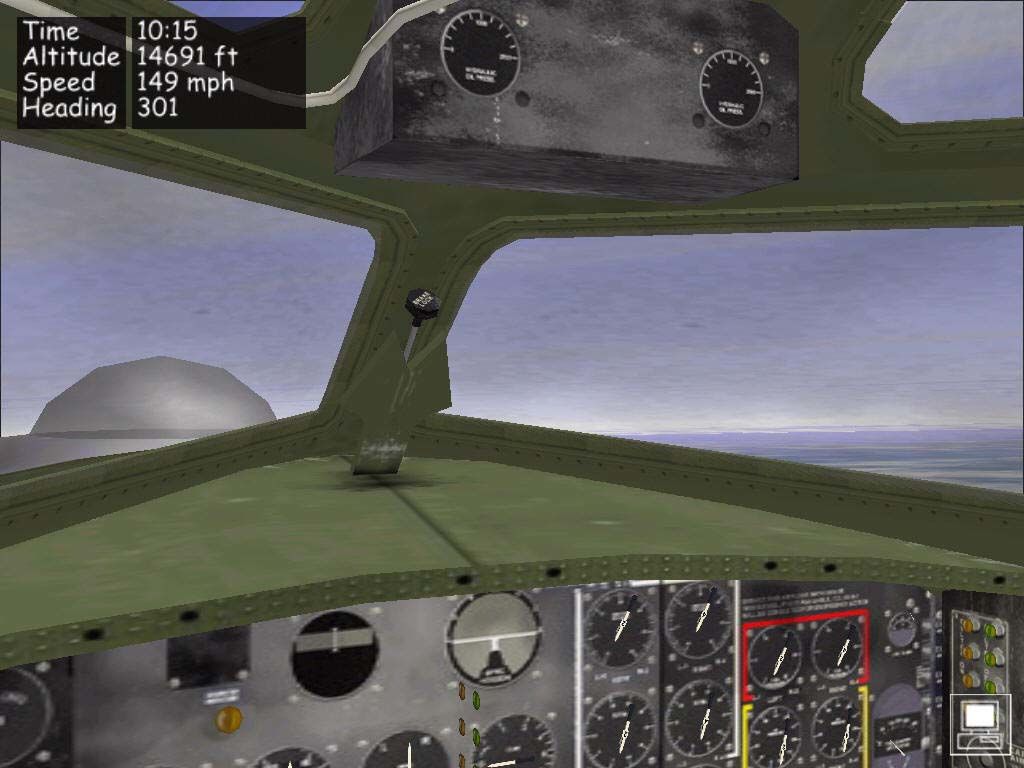
The F-19's panel is really easy to understand, there's a slot just in the middle that fills from the bottom to the top as you lose concealment, and from the top to the botton as the enemy radar pulses get stronger (because you get closer to the source or there's no longer a mountain in between or whatever) when the two bars join you're a dot in someone's radar screen, you'd better do something fast before you're locked. Things that will increase your radar footprint are flying high, flying fast, not remaining horizontal (when there's radar around and you need to change course do so quickly between radar pulses), and having your weapon bays open (open them just before firing and close them immediately afterwards). So your business consists in remaining undetected, that's the whole idea about this game and this bird. Besides the stealth comes at the cost of reducing the flight capabilities, the bird is slower and less manoeuvrable than most other fighters (actually it's more like a strategic attack craft than a fighter proper), and if we add that the missions routinely imply getting your electromagnetic absorbing rear very deep behind enemy lines all on your own and with very limited ammo, we reach the conclusion that either you play stealthy or you won't get far and, most important, you won't get the most out of this original game. Uncle Sam didn't flush so many tax dollars into the development and construction of this bird for you to act like Tom Cruise. I guess this, as well as the overly simple panels, were conscious decisions by the developers, understandable at the time.Īs I've said, if you want to enjoy this game you'll have to understand that it's not a conventional flight sim. In the game visibility is always perfect. There's no point in flying a plane that's invisible to radar but stands out black against the blue sky-that's why warplanes are usually coloured blueish gray. In real life all missions were carried out during nighttime. The F-117 wasn't officially nicknamed Nighthawk without a reason. There is one big concession to realism though. (Microprose eventually made a sequel to this game about the F-117.) If you want to know more go ahead and use Google or the Wikipedia. However this game is very thoroughly documented and it's as realistic as it was possible without access to national security sensitive data the gameplay wouldn't have been much different if Microprose would have had the Lockheed blueprints. Heck there's no F-19 whatsoever in the USAF." Well I didn't say that, did I wise guy? :P Now seriously, it's a very long story and you can learn it elsewhere, but this game was made when everything about the later called F-117 Nighthawk was secret, and so the game had to be based on guess-work, even regarding the very shape of the plane. Some wise guy might say, "Hey the USAF Stealth Fighter is not named F-19. You just press Alt+V once to turn the engine whirr off if you value your brains, while the rest of the sounds might be informative albeit very elemental.

#Microprose b17 manual Pc
Well, we're talking about the PC platform in the 80's.


#Microprose b17 manual code
Technically speaking, the graphics may seem pixelated nowadays but they were really good back in 1988 and a lot of hard eye-consuming work was invested into optimizing the assembly code to make this 3D game playable in the machines then available. What I mean is that a Stealth Fighter's purpose is not to shoot down everything in sight, and if you attempt that you will get yourself killed and you will have been guilty of the worst tax squander in history -and that's a lot to say. It's an absolute must-have for anyone into flight sims, but don't expect it to be like any other one you've played. Heck it was made by Microprose, by Sid Meier, 'nuff said. There aren't many games about the USAF Stealth Fighter, if only because the F-117 specs remain classified to date, but this one is deservedly the most popular and of course the pioneer.


 0 kommentar(er)
0 kommentar(er)
